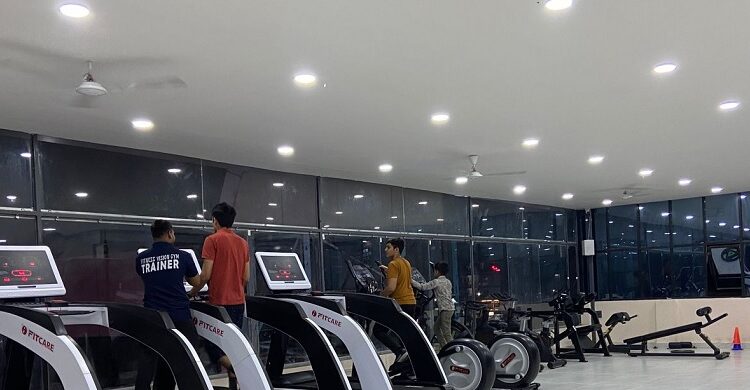Living in a bustling city like Singapore means navigating long hours at work, crowded public transport, and limited personal space. Amidst these urban challenges, wellness is increasingly seen not just as a health necessity but as a lifestyle choice. More Singaporeans are turning to a fitness gym singapore not only to stay in shape but also to balance their lives, socialise, and build habits that enhance their overall quality of living.
Fitness as an Extension of Urban Culture
Singapore’s urban landscape is marked by high-rise buildings, integrated shopping malls, and efficient transport systems. In this environment, gyms are no longer tucked away as specialised facilities. They are part of the city’s cultural fabric, often located in shopping complexes, near MRT stations, and within residential communities.
This integration makes fitness accessible and weaves it naturally into the daily routine of city dwellers. For many, a gym membership is as important as a mobile phone plan or a public transport card.
The Role of Convenience in Urban Wellness
City life leaves little time for unnecessary detours. Singapore gyms are strategically located to align with urban lifestyles, ensuring members can access them before work, during lunch breaks, or after office hours.
Convenience-driven features include:
-
Gyms inside shopping malls for one-stop convenience.
-
Outlets located close to MRT stations.
-
Flexible operating hours to suit different work shifts.
-
Availability of short-duration, high-intensity classes for busy schedules.
This convenience makes fitness a natural part of daily life instead of a forced addition.
Fitness Gyms as Social Spaces
Urban living can sometimes feel isolating despite the density of the population. Gyms provide social outlets where people can connect with like-minded individuals. Group classes, social fitness events, and shared workout goals transform gyms into communities rather than just exercise facilities.
For young professionals, gyms often double as networking hubs, while families see them as safe spaces where parents and children can share active lifestyles.
Balancing Stress and Productivity
City living comes with high levels of stress. Fitness gyms play an essential role in providing physical outlets that improve mental clarity, reduce anxiety, and boost productivity. Regular workouts help professionals perform better at work, recover faster from long days, and avoid burnout.
Lifestyle Identity and Personal Branding
In urban cultures like Singapore, fitness is also tied to identity. Being a gym member signals discipline, self-care, and ambition. Social media has amplified this, as many individuals showcase their fitness journeys as part of their personal brand. A gym is no longer only a workout facility but a place where people shape both their bodies and their identities.
Integration with Urban Amenities
Modern gyms are increasingly part of multi-use spaces. Members can combine workouts with dining, shopping, or entertainment in the same complex. This integration fits neatly into the city’s fast-paced rhythm. For example, an office worker might attend a quick class, shower, grab a healthy meal, and return to work within the same building.
Wellness Beyond Exercise
Urban gyms have expanded their offerings beyond standard training. To cater to holistic lifestyles, they now provide:
-
Nutrition support through cafés and diet consultations.
-
Mental wellness sessions such as yoga and mindfulness classes.
-
Recovery facilities including saunas, massage chairs, or physiotherapy.
-
Lifestyle workshops on sleep, stress management, and work-life balance.
This makes gyms a comprehensive wellness destination for city residents.
The Economics of Urban Gym Memberships
In an expensive city, investing in gym memberships reflects prioritisation of lifestyle. For many urban dwellers, a gym is not seen as a luxury but as a practical necessity for long-term health. The cost is justified by the returns in energy, productivity, and reduced medical bills.
Gyms and the Trend of Hybrid Living
Singapore’s urban residents increasingly adopt hybrid work and lifestyle arrangements. Gyms are adapting with hybrid models of training: offering both in-person classes and virtual sessions. This allows members to integrate fitness seamlessly into home-based work or travel-heavy schedules.
The Role of True Fitness Singapore
True Fitness Singapore exemplifies how gyms have become part of urban living. With flexible locations, comprehensive wellness offerings, and professional support, it shows how fitness can be seamlessly embedded into the lives of busy city dwellers. For many, it represents not just a place to train but a lifestyle partner that complements modern living.
The Future of Fitness in Urban Singapore
Urbanisation in Singapore will only deepen, and with it, the demand for accessible, multifunctional gyms will grow. The gyms of the future will likely include more integrated services, eco-friendly designs, and technology-driven support. For residents, this ensures that fitness remains a central part of life, keeping them healthier, happier, and more productive in the midst of city living.
FAQs
Q. How does joining a gym benefit urban professionals specifically?
A. Gyms provide quick, convenient workouts that help professionals manage stress, improve productivity, and maintain balance in fast-paced work environments.
Q. Are gyms in Singapore designed for families as well as individuals?
A. Yes, many gyms offer family packages, kids’ classes, and childcare facilities, making them inclusive for all age groups.
Q. What makes gyms an important part of Singapore’s urban culture?
A. Their strategic locations, flexible hours, and integration with shopping and residential spaces make gyms part of daily life for city dwellers.
Q. Do gyms only focus on physical training?
A. No, many urban gyms offer holistic services including nutrition guidance, recovery options, and mental wellness programmes.
Q. Can gym membership be considered a lifestyle investment?
A. Absolutely. Beyond fitness, gym memberships enhance social connections, personal branding, and overall wellbeing, making them a valuable investment in urban living.







